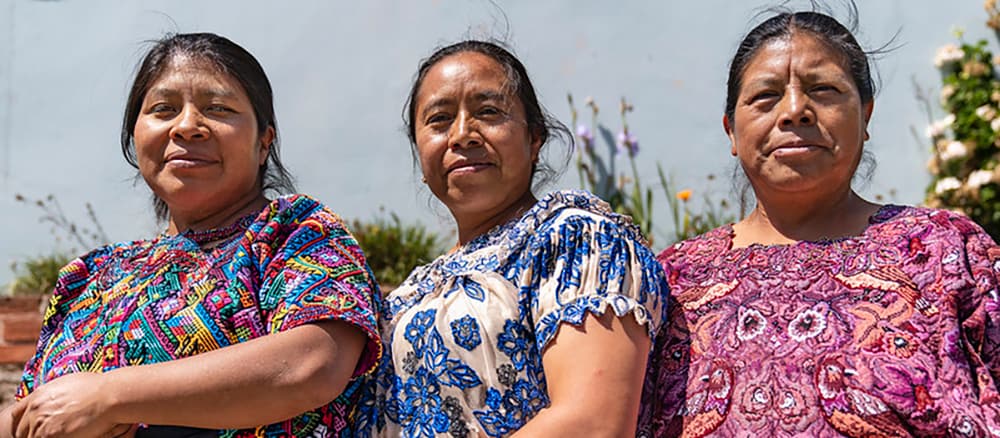Principle 2: Global Public Health Equity Lens

With human rights as a basis for equity, use a global public health equity lens that considers systemic social and health inequities.
- While approaching cross-cultural public health activities and communication with humility, public health professionals should maintain a foundational respect for human rights. Respect and protection of human rights helps build trusting relationships between the public and public health practitioners, create a more effective and conscientious public health workforce, and improve the effectiveness of public health programs.
- Health is recognized as interdependent and interrelated to other human rights, such as the rights to life, to freedom from discrimination, to recognition everywhere as a person, and to a standard of living adequate for health and well-being.
Do you have questions or feedback?
Please contact us at cdcglobal@cdc.gov
-
- Review the Universal Declaration of Human Rights to understand the basis of human rights and use the Universal Human Rights Index to explore existing country-level human rights recommendations from the United Nations.
- See CDC’s Global Health Equity Strategy to learn more about how CDC builds from a foundation of human rights to develop health equity goals and commitments.
- Emphasize the social drivers/determinants of health (i.e., non-medical factors in the places where people live, learn, work, and play that affect a wide range of health and quality of life, risks, and outcomes), especially when presenting racial, ethnic, gender, occupation, education, spatial, and economic income/wealth data. Health equity is a process of removing structural patterns or economic and social obstacles to health that are drivers of health disparities.
- Note: Globally, social drivers are incredibly diverse and nuanced. Cultures, countries, and regions are not monolithic, even at the community level. While there may be cross-cutting similarities, the social drivers in one locality can be rather different from a neighboring country, community, or even household. Likewise, definitions of ‘challenges, successes, wants, needs, etc.’ will vary within each community. Partner with the relevant community to reach consensus, identify priorities, and make decisions.
- See Additional Resources to learn more about social drivers/determinants of health.
- Demonstrate respect through communication.
- Whenever possible, avoid generalization, homogenization, and stereotyping. Specify the population, locality, country(ies), or region(s).
- Generalizations and homogenization can be condescending, derogatory, or insulting to the audience(s).
- Be cautious not to overlook inclusivity or respect for the sake of brevity.
- Countries and populations are too diverse and complex to be categorized only into dichotomies such as Global North vs. South, high-income vs. low-income, developed vs. developing, or resource-rich vs. resource-poor settings.
- Be cautious when comparing public health challenges in one country/region to the challenges experienced in another country/region. Some strategies and lessons-learned may apply across cultures and geographies, but it is critical to always consider the local context and unique experiences in each locality.
- Avoid outdated, inaccurate, and/or demeaning terminology. See CDC’s Health Equity Guiding Principles for Inclusive Communication and Global Terminology Considerations.
- Avoid exoticizing (excessively portraying something unfamiliar as unusual, romantic, or glamorous) people, cultures, personal attributes, practices, environments, experiences, and illnesses/diseases.
- Whenever possible, avoid generalization, homogenization, and stereotyping. Specify the population, locality, country(ies), or region(s).
- Adopt person-first language to avoid devaluing individuals or focusing on barriers.
- For example, use ‘people with HIV’ or ‘people living with HIV’ instead of ‘HIV-positive people’; or ‘people who inject drugs’ instead of ‘drug-users’; or ‘people with diverse abilities’ or ‘people living with disability’ instead of ‘the disabled’.
- Note: Person-first sentence structure is grammatically feasible in English but may not be feasible in other languages. In that case, seek to understand the local language and context. Avoid using any local terms or slang that may have negative, disrespectful, derisive, or partisan connotations.
- Note: While person-first language can be a default strategy, also ask people how they would like to be referred to. Be nimble with word choice since opinions on preferred descriptors can vary between individual members or sub-groups of a population.
- Learn about conversational cultural norms that will help to respectfully build relationships and promote trust when engaging with community members and partners. For example, in some cultures it is polite to ask about a person’s family at the beginning of the conversation and offensive to not ask about family. On the other hand, it can be considered immaterial or impolite in other cultures to inquire about people’s personal lives.
- Also learn about behavioral taboos and norms when engaging with local partners and community members. For example, in some cultures it is offensive to point bare feet at others or maintain prolonged eye contact.
- In languages that have formal and informal tenses, pronouns, or terms, ensure that terms of address are appropriate to the situation and person. Ask local partners, contacts, and staff for assistance. For example, in French and Spanish, there is a difference in formality of the pronouns ‘tu/tú’ (informal) and ‘vous/usted’ (formal), depending on the situation and person.
- Be credible and share enough information to keep the audience interested and engaged in the content, while strictly maintaining the privacy and respecting the dignity of any person/community/population featured in a story, blog, graphic, presentation, report, discussion, or meeting.
- Avoid the deficit perspective.
- Markers of the deficit perspective include:
-
-
- Rather than capable, active participants, populations are seen or addressed as ‘empty containers to be filled,’ passive recipients, or people without lives, ideas, thoughts, voices, expertise, or resources to contribute.
- Maintaining a focus on what a person/group does not understand or does not do, what a person’s/group’s situation lacks, and what it seems the surrounding community cannot provide.
- Blaming the individual/population by not acknowledging the underlying conditions and systemic factors that influence health behaviors, attitudes, and outcomes.
- A focus that is limited to negative results, negative outcomes, and negative examples, depictions, or instances.
-
- Instead of communicating from a deficit perspective, incorporate strengths-based (or assets-based) approaches and portray global public health issues in an authentic, contextualized, and respectful way that presents a balanced view of public health issues in the broader context of underlying drivers of health, including both the negative and positive aspects (e.g., challenges, impact, successes, failures, unknowns, opportunities, and next steps).
- Involve the community to co-define strengths and challenges and co-design strategies. Ask community members what they believe the community’s strengths are and how those strengths help them face challenges.
- A strengths-based approach to communication emphasizes what is working, how existing resources can be or are leveraged, and local ownership of strategies and initiatives.

A graduate of CDC Tanzania’s Advanced Field Epidemiology and Laboratory Training Program (FELTP) smiles after her graduation ceremony. Photo by Nsiande Lema/Tanzania FELTP
Page last reviewed: August 8, 2022
Content source: Global Health